On Tuesday, EA Sports released their first wave of ratings for the top 50 players in NHL 20. According to the EA website, overall attributes take into account individual abilities for both skaters and goalies.
Related: NHL 20 Gameplay Trailer: Features & Analysis
EA will be revealing the ratings for the top 50 players until the release of the full version of NHL 20 on Sept. 13. But for now, let’s analyze the ratings EA released Tuesday and see who cracked the top 50.
No. 50: Dylan Larkin, 88 OVR
This was a pleasant surprise as Larkin had his best season in his young career last season. The Red Wings centerman had his first 30-goal season and was just under a point per game — 73 points in 76 games — and established himself as the frontrunner to be the Red Wings’ next captain.
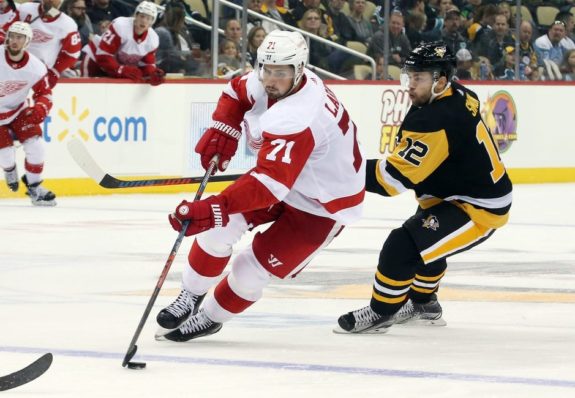
EA gave Larkin an 88 overall rating, two points higher than in NHL 19, and I believe this is a perfect assessment of the 22-year-old. His face-off rating increased a whopping 13 points (75 to 88), his shot-blocking went up one point (84), and his stick checking increased two points (89). He also got an increase to his offensive awareness (90) and a huge boost to his poise (75 to 85), as well as a two-point increase to his acceleration (95). An 88 overall is perfect right now and if the Red Wings and Larkin have a strong season, it’s possible he could be a 90 overall when it’s all said and done.
No. 49: Frederik Andersen, 88 OVR
Andersen played his third consecutive 60-game season in 2018-19 and was about on par with his 2017-18 season. As far as goalie statistics last season, he was seventh in games played (60), third in wins (36) and second in total saves (1,796).
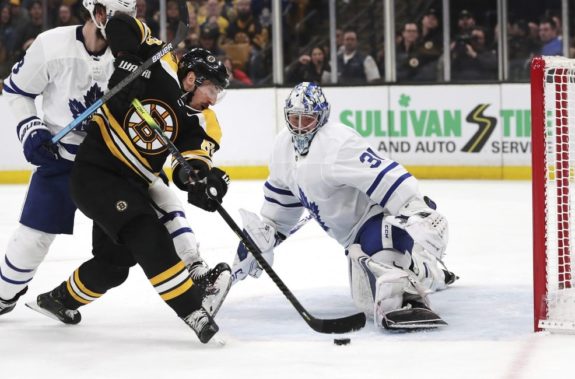
In NHL 19, Andersen was given an 89 overall rating with elite potential, so an 88 to start in NHL 20 is correct, in my opinion. His attribute ratings in NHL 20 are identical to the numbers in NHL 19, and that’s essentially true of his statistics from last season. His save percentage was down one point, his goals against average was slightly lower, but he had one more quality start than he did last season and his goals saved above average statistic was the highest of his career. An 88 is right to start this season, but it should increase if the Toronto Maple Leafs improve on last season.
No. 48: P.K. Subban, 88 OVR
The newest New Jersey Devil had a down season in 2018-19. He only played 63 games — the fewest since the 2012-13 season for him — and had just 31 points. He also dipped below 23 minutes of average ice time for the first time since the 2010-11 season.
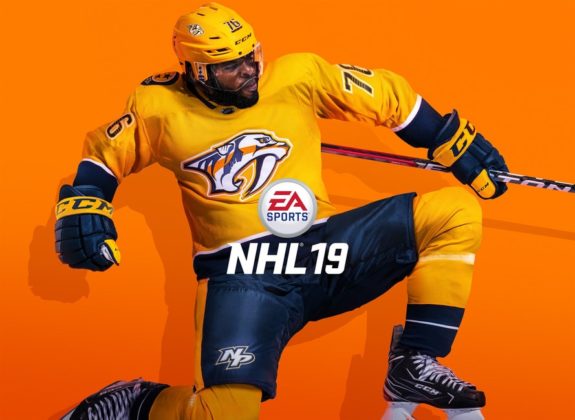
The NHL 19 coverboy had an 88 overall rating with elite potential in the same game, and all of his attributes compared to last year are the same except for shot-blocking and durability. Subban’s shot-blocking was decreased one point from last year’s game (87 this year), but his durability went down seven points (80 this year). This will be his age-30 season and EA believes he has become more injury-prone. Looking at his games played over the last four years, they seem to be right. An 88 overall is spot-on for Subban.
No. 47: Sebastian Aho, 88 OVR
Another very pleasant surprise in the top 50 this year, Aho established himself as one of the top up-and-coming offensive stars in today’s game. He set career highs in almost every offensive category and was a big reason why the Carolina Hurricanes made it to the Eastern Conference Final last season.
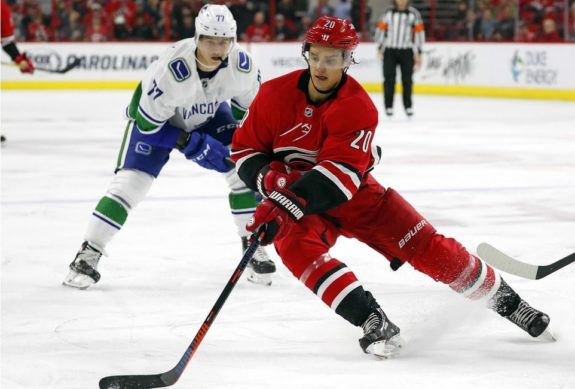
Aho was previously an 85 overall to start NHL 19 and saw significant increases to most of his attributes, especially his puck skills and shooting. His accuracy ratings for both slap shots and wrist shots are up three points (91) as are his passing and puck control (92). I believe he could have been an 89 overall simply for his play in the playoffs — 12 points in 15 games — and his leadership skills as a 21-year-old. An 88 is fine, but if he repeats with another strong season, expect him to be a 90 overall by as soon as the All-Star break.
No. 46: Jonathan Huberdeau, 88 OVR
Huberdeau was a sneaky pick as an 88 overall, at least until you look at his numbers. He’s the only forward who had 90 points in the 2018-19 season that won’t start as an 89 or higher, but he will be a building block for what many expect to be a big season for the Florida Panthers in 2019-20.
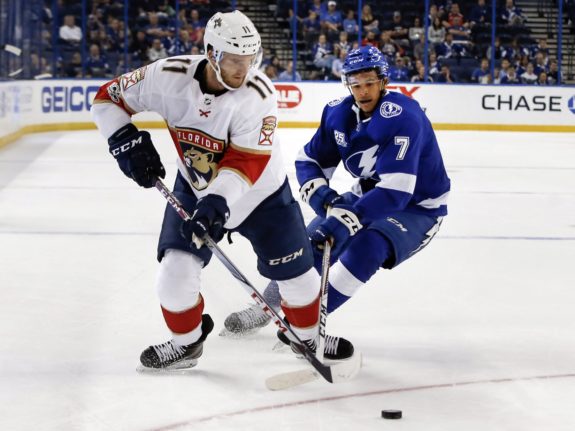
In NHL 19, Huberdeau was an elite 86 overall with medium potential, but after his first 30-goal and 90-point season, his potential should be high. His passing and puck control are each up one point from last year (91), as well as his shot-blocking (81), stick checking (89), offensive awareness (92), balance (86) and slap shot accuracy (87). His defensive awareness went up two points (89) and his durability went from an 85 to a 90. While an 88 was surprising at first glance, it’s perfect once you look at the season he had in 2018-19.
No. 45: Morgan Rielly, 88 OVR
Last year, Rielly had about as big of a breakout season as a player can have. He set career-highs in goals, assists, points, plus-minus, average ice time, shot percentage, power play scoring, and takeaways. He also had five points in seven playoff games while playing just over 25 minutes a game in the postseason.
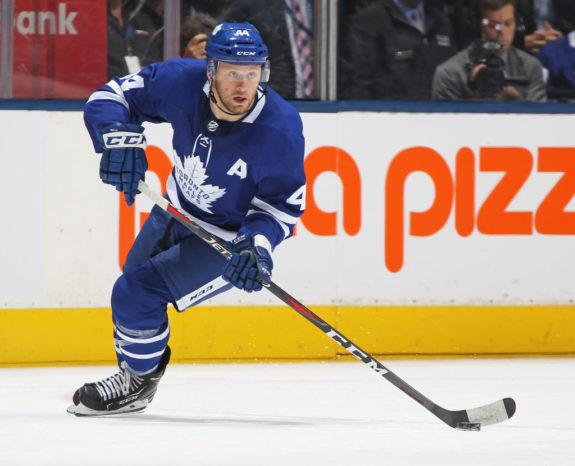
Rielly was an elite 88 overall with medium potential in NHL 19, which was accurate based on his numbers. However, an 88 is simply too low for a defenseman who puts up more than 70 points. He ranked third in scoring by defensemen last season, behind Brent Burns and Norris Trophy-winner Mark Giordano, both of which should be at least 90 overalls.
Related: Morgan Rielly – Norris Trophy Winner?
The only change to his stats was his durability, which is up from an 85 to an 89. I believe his offensive stats should be between 92 and 93 as opposed to 90 and 91. An 89 would have been better suited for the Maple Leafs alternate captain, and I believe he would be there if he were a finalist for the Norris Trophy.
No. 44: Jack Eichel, 88 OVR
Eichel also had a breakout year in 2018-19 with 82 points in 72 games. He was surrounded by much better players this season and his point totals have increased in each of his four NHL seasons.
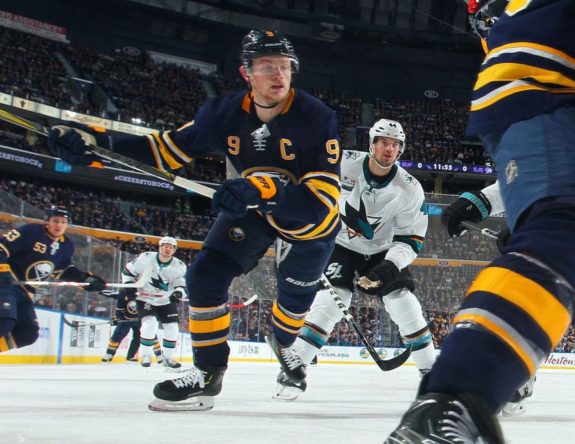
Eichel was an elite 88 overall with high potential in NHL 19, and I still believe he should have elite potential. His face-offs are up four points from NHL 19 (81 in NHL 20) and his durability is up two points to an 87. An 88 overall for Eichel is correct, but his rating will increase as long as he’s healthy. The Sabres are poised for a big year and Eichel is their leader.
No. 43: Phil Kessel, 88 OVR
Kessel is coming off his third straight 82-game season, and while he had 82 points last season, he had 92 in 2017-18. For that reason, his rating is an 88 this year as opposed to the 89 he was given in NHL 19.

This season Kessel will prove if he can be the top guy for the Arizona Coyotes franchise. He formed a nice trio with Sidney Crosby and Evgeni Malkin with the Penguins, but he is now the top scorer for the Coyotes. The only difference in rating was his durability, which went from an 85 last year to a 90 this year, showing that EA takes into account a lower point total and the team he is now on. As long as he stays healthy, Kessel should hover right around 90 by the time the last roster update is released.
No. 42: Jonathan Toews, 88 OVR
The Blackhawks captain had a renaissance last season with a career-high 81 points in 82 games. After posting just 52 points in 2017-18 — his lowest total since the 2012-13 season — a lot of questions surrounded him last season, but he proved he can still play at an elite level.
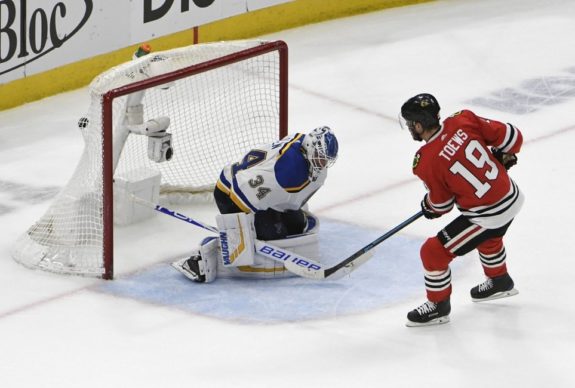
One statistic that stands out in NHL 20 is his face-offs. He was at an 85 rating in NHL 19, but for this year’s game, it’s up to a 93. However, his face-off percentage was 58% in 2017-18 and 56.3% last year. Both are great percentages, but his percentage from last year is slightly below his career average. He also played 82 games for the first time since 2008-09, and yet his durability rating was lowered from a 90 to an 89. Those don’t make much sense, but what does is his one-point increase to his offensive awareness (88) and wrist shot accuracy (89). He’s a franchise player and the captain, as well as a bonafide scorer, so an 88 makes a lot of sense even if some of the changes to specific attributes do not.
No. 41: Brayden Point, 89 OVR
Point burst onto the scene in 2017-18 with 66 points in 82 games, but he became one of the top scorers on an offensive juggernaut Tampa Bay Lightning team last season. He posted 41 goals and 51 assists for 92 points and established himself as one of the top young two-way forwards in the NHL.
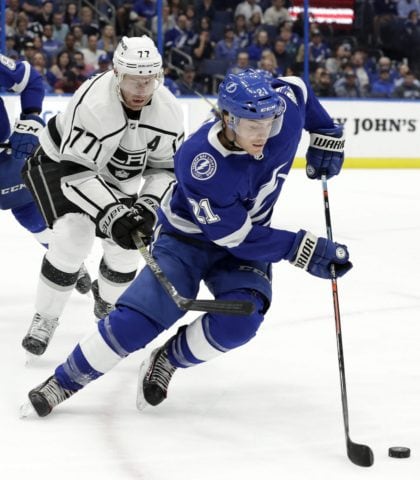
He was given a top-six forward role with medium potential and an 88 overall rating in NHL 19, but that will change in NHL 20. As far as his attributes, his face-offs are up from a 78 to an 82 and his durability was increased to an 89 from an 85. His face-off percentage has increased by about 3% each year he’s been in the league, so that makes perfect sense.
Related: Lightning: What If Point Isn’t Signed to Start the Season?
On most other teams, Point would be a top-six forward with high or even elite potential, but he’s behind Steven Stamkos and Nikita Kucherov. He deserves an 89 overall, and if he can repeat as a 90-point player, expect him to be a 90 or 91 overall by the season’s end.
EA will release No’s. 40-31 in the near future. To view the current list of ratings, click here.